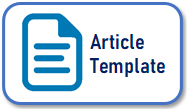The Diversity of Avifauna and Potency for Development of Ecoturism in Minangkabau Village, Padang Panjang City
Abstract
Padang Panjang has several tourist attractions surrounded by secondary forests with natural vegetation, one of them is the Minangkabau Village. The Minangkabau village has potencies to be an ecotourism object. This study aims to analyze the potential of avifauna that have an attraction for ecotourism development, determine the role of stakeholders in supporting ecotourism development in Padang Panjang, and analyze development priorities as its potencies and objects of ecotourism attraction in Padang Panjang. We used The MacKinnon method by conducting direct surveys in the field when the birds are active in the morning and evening. Deep interviews were conducted with Dinas Pemuda Olahraga dan Pariwisata (Disporapar) Kota Padang Panjang to determine stakeholders' role in tourism activities in Padang Panjang. SWOT analysis is carried out to see the priority of ecotourism development so that it is more focused and able to contribute to ecotourism areas and the community. The data obtained were analyzed to calculate the Diversity Index, Species Richness, and Species Evenness. The research results show that the Minangkabau Village areas have high diversity, richness, and evenness of bird species, namely H' 3.21, DM 7.50, and ED 0.85. There were 43 bird species from 23 families. Species that has high conservation status are Serindit Melayu (Loriculus galgulus) protected species, Jalak Kerbau (Acridotheres javanicus) with Vulnerable IUCN status, Julang Emas (Rhyticeros undulatus) Vulnerable IUCN status also protected and 2 species of Eagle (Ictinaetus malayensis and Spilornis cheela). These species have potencies to be developed as an ecotourism attraction object that stakeholders support as coaches and companions. The strategy for developing ecotourism in Padang Panjang under its potencies for biodiversity is to increase public knowledge about animal conservation (especially avifauna), biodiversity, and the adverse effects of hunting and collaborate to manage ecotourism by hiking/jungle tracking and birdwatching.
Full Text:
PDFReferences
Achmad, A., P.O. Ngakan, A. Umar, dan Asrianny. 2013. Potensi Keanekaragaman Satwaliar untuk Pengembangan Ekowisata di Laboratorium Lapangan Konservasi Sumberdaya Hutan dan Ekowisata Hutan Pendidikan UNHAS. Jurnal Penelitian Kehutanan Wallacea. Vol. 2, No. 2. Halaman 79-92.
Ayat, A. 2011. Panduan Lapangan Burung-Burung Agroforest di Sumatera.World Agroforesty Center. Bogor.
Bannerman, S. 1998. Biodiversity and Interior Habitats: The Need to Minimize Edge Effects. Victoria: British Columbia Ministry of Forests Research Program. Extension Note 21, pp. 1–8.
BirdLife International. 2020. Country Profile: Indonesia. Available from http;//www.birdlife.org/datazone/country/indonesia. Checked; 2020-09-10 Corner, E.J.H dan K. Watanabe. 1969. Illustrated Guide to Tropical Plants. Tokyo: Hirokawa Publishing Company.
Elnika, C. 2017. Interaksi Burung Dengan Tumbuhan Beringin (Ficus Benjamina) di Kebun Raya Andalas. Padang: Skripsi Sarjana Biologi, Universitas Andalas.
Fandeli, C. 2002. Pengusahaan Ekowisata. Yogyakarta: Fakultas Kehutanan UGM.
Kementrian Lingkungan Hidup dan Kehutanan. 2019. Panduan Identifikasi Jenis Satwa Liar Dilindungi Aves. Seri Passeriformes (Burung Kicau). Bogor : LIPI.
Latupapua, Y., Puyadmoko, S., Fandeli, C. Dan Baiquni,M. 2013. Analisa Potensi Keanekaragaman Hayati di Taman Nasional Manusela sebagai Daya Tarik Ekowisata. Jurnal Agroforestri Vol VIII No.4.
MacKinnon J., K. Philips dan B. Van Balen. 2010. Burung-burung di sumatera, Jawa, Bali, dan Kalimantan. Bogor: LIPI.
Magurran, A. E. 2004. Measuring Biological Diversity. Blackwell Science Ltd. Oxford. United Kingdom.
Rai, I.N., I.M. Sukewijaya dan I.G.A. Gunadi. 2009. Diversitas Flora di Bukit Abah, Kabupaten Klungkung untuk Mendukung Pengembangan Ekowisata. Jurnal Bumi Lestari. Vol. 9, No. 1. Halaman 103-111.
Revandi, Y., Rahayuningsih, M., Harnina, S. dan Abdullah, M. 2018. Kekayaan Jenis Jamur Penyusun Material Tutup Sarang Julang Emas (Rhyticeros undulatus) di Gunung Ungaran Jawa Tengah. Prosiding Konferensi Peneliti dan Pemerhati Burung Indonesia (KPPBI) 4 Semarang. Hal 365-369.
TIES. 2015.What Is Ecotourism?. https://ecotourism.org/what-is-ecotourism/. Diakses 5 Februari 2020.
Woersok, P. V., Manusawai, J. dan Sinery, A. 2019. Kajian Kelayakan Potensi dan Strategi Pengembangan Ekowisata di Taman Wisata Alam Klamono. Jurnal Median. Vol. 11, No. 3.
Wood, M.E. 2002. Ecotourism : Principles, Practices & Policies for Sustainability. UNEP. The International Ecotourism Society.
Refbacks
- There are currently no refbacks.




